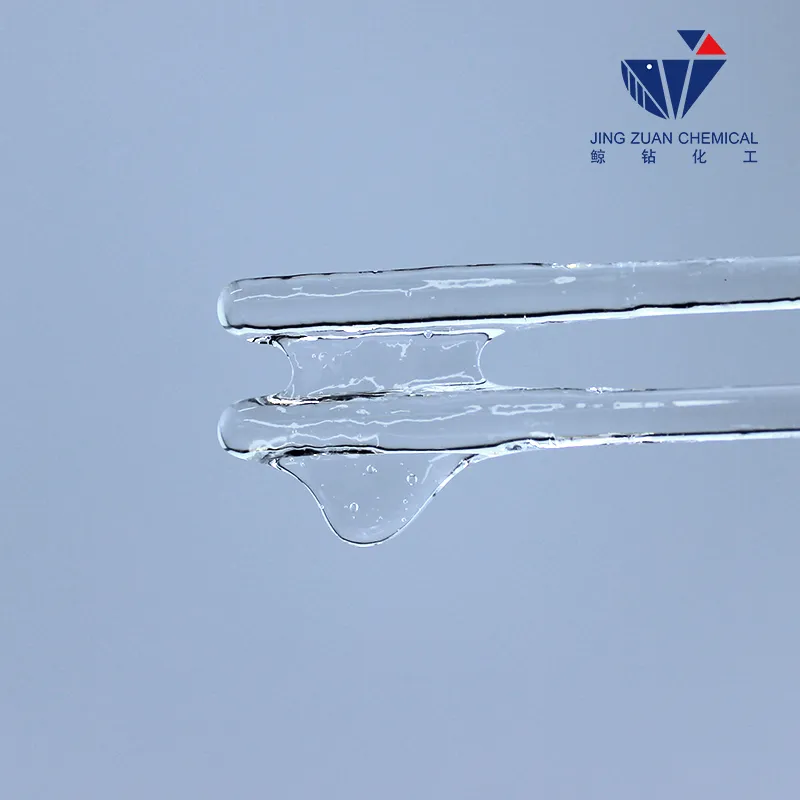
Oct . 20, 2024 23:59 Back to list
Applications and Benefits of Hydroxypropyl Methyl Cellulose in Various Industries
Hydroxypropyl Methyl Cellulose Ether A Versatile Polymer in Modern Industries
Hydroxypropyl methyl cellulose (HPMC) is a cellulose-derived polymer that has become increasingly popular in various industries due to its unique properties and versatility. This semi-synthetic compound is obtained by modifying cellulose, a natural polymer derived from plant cell walls, through a series of chemical processes that introduce hydroxypropyl and methyl groups. These modifications impart a range of functional characteristics to HPMC, making it a valuable ingredient in pharmaceuticals, food products, construction materials, and personal care items.
Properties and Characteristics
HPMC is known for its excellent water solubility and viscosity control, which are largely attributable to its chemical structure. The degree of hydroxypropyl and methyl substitution can be varied, allowing manufacturers to tailor the polymer's properties for specific applications. One of the most significant characteristics of HPMC is its ability to form viscous solutions, which can thicken liquid formulations and stabilize emulsions. Additionally, HPMC is non-toxic, biodegradable, and often considered safe for consumption, making it ideal for food and pharmaceutical applications.
Moreover, HPMC has remarkable film-forming abilities and can create strong, flexible films when dried. This feature is especially useful in packaging materials and coating applications, where protective barriers are necessary to enhance product shelf life. It is also resistant to oils and organic solvents, expanding its utility in formulations that require stability in diverse environmental conditions.
Applications in Pharmaceuticals
In the pharmaceutical industry, HPMC is widely used as a binding agent in tablets, helping to ensure uniform distribution of active ingredients and improving the mechanical strength of the final product. Its controlled release properties make it an essential component in the development of sustained-release formulations, allowing for the gradual release of medication over extended periods. HPMC also serves as a stabilizer in liquid formulations, such as suspensions and syrups, providing viscosity that prevents sedimentation.
Additionally, HPMC is utilized in the production of film-coated tablets, where it acts as a polymeric coating that protects the active ingredients from moisture and light while aiding in the swallowing process. Its biocompatibility further enhances its appeal in pharmaceutical applications, as it can be employed in various drug delivery systems, including ocular and topical formulations.
hydroxypropyl methyl cellulose ether

Role in Food Products
In the food industry, HPMC is often used as a food additive, valued for its emulsifying and thickening properties. It helps to improve texture, stability, and shelf life in a wide array of food products, ranging from sauces and dressings to baked goods and dairy alternatives. HPMC can also enhance the mouthfeel of low-fat products, providing creaminess without the addition of fat.
Because of its versatility, HPMC is sometimes employed in gluten-free products to mimic the texture and elasticity that gluten provides. This application has become increasingly important as demand for gluten-free diets rises, making HPMC a critical ingredient in formulating acceptable alternatives for individuals with gluten sensitivities or celiac disease.
Use in Construction and Personal Care
The construction industry also benefits from HPMC, particularly in tile adhesives, cement, and plaster applications. Here, it serves to improve the workability, adhesion, and water retention properties of the mixture, allowing for extended open times and better performance of the final product. HPMC's ability to enhance the viscosity of construction materials ensures that they can be applied smoothly, leading to more even surfaces.
In the personal care sector, HPMC is used in products such as hair gels, lotions, and creams. It serves as a thickening agent, stabilizer, and emulsifier, contributing to the aesthetic properties and performance of cosmetic formulations. Its gentle nature and skin compatibility make it a preferred ingredient in many formulations designed for sensitive skin.
Conclusion
Hydroxypropyl methyl cellulose ether is a remarkable polymer that bridges the gap between natural and synthetic materials. Its diverse applications across multiple industries underscore its importance in modern formulations. With ongoing research and development, the potential for HPMC continues to expand, promising innovations and efficient solutions in pharmaceuticals, food, construction, and personal care products. As industries strive for greater sustainability and performance, HPMC stands out as a versatile ingredient that meets both consumer demands and regulatory standards.
-
Versatile Hpmc Uses in Different Industries
NewsJun.19,2025
-
Redispersible Powder's Role in Enhancing Durability of Construction Products
NewsJun.19,2025
-
Hydroxyethyl Cellulose Applications Driving Green Industrial Processes
NewsJun.19,2025
-
Exploring Different Redispersible Polymer Powder
NewsJun.19,2025
-
Choosing the Right Mortar Bonding Agent
NewsJun.19,2025
-
Applications and Significance of China Hpmc in Modern Industries
NewsJun.19,2025







